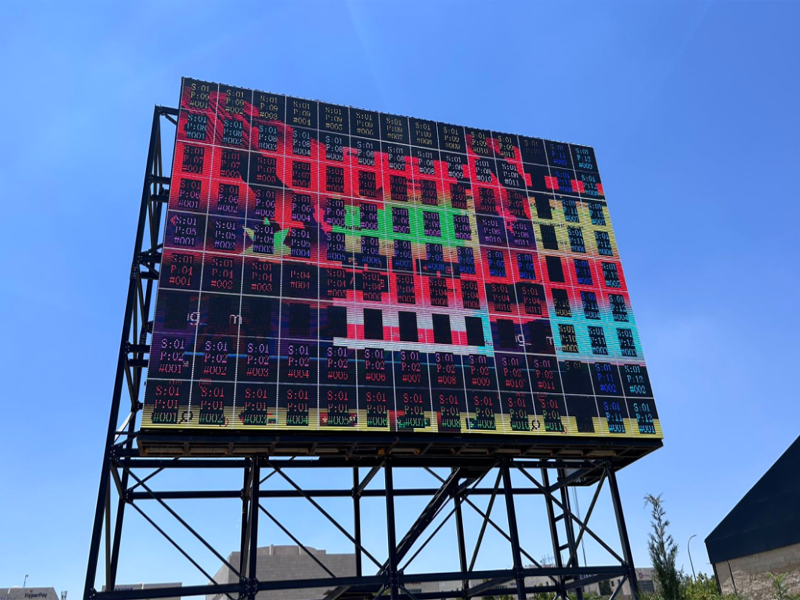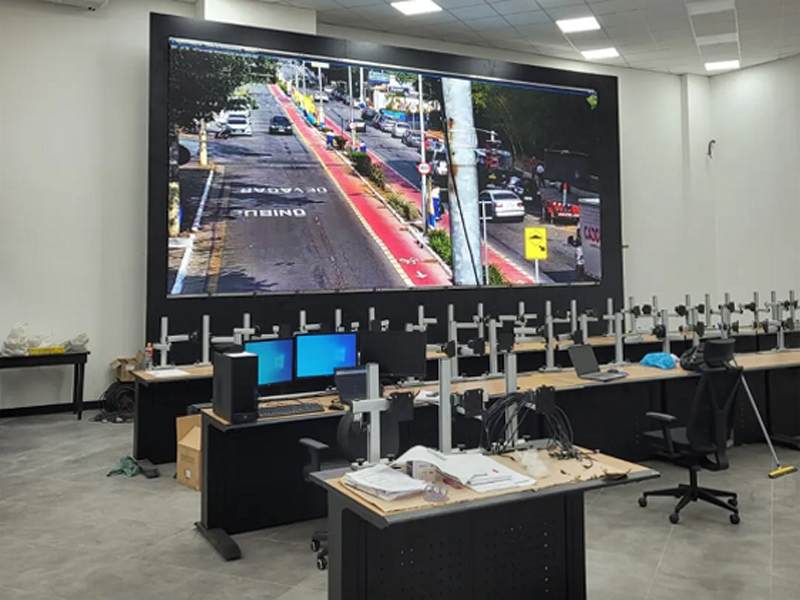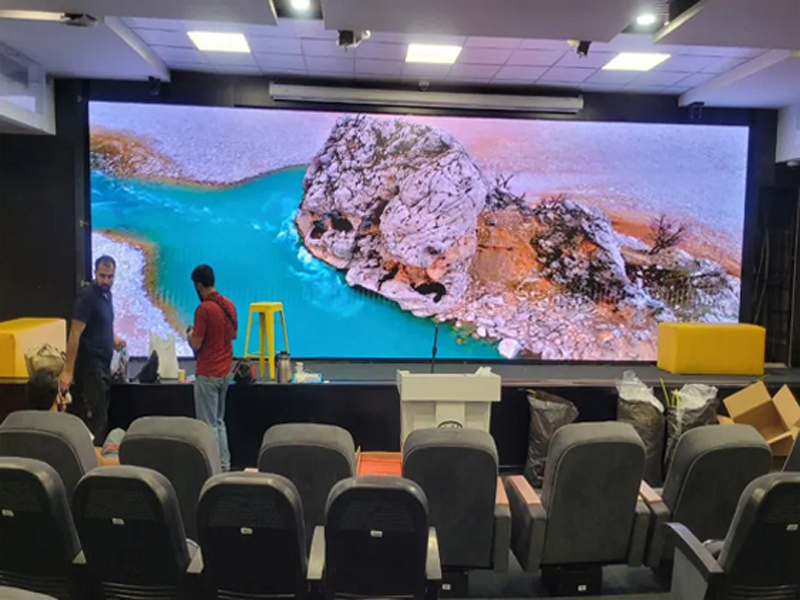LED displays are made up of flat panel screens that use carefully collected light-emitting diodes as pixels for video displays. You can install them both outdoors and indoors to creatively present messages for your brand and advertising.
They are one of the most effective ways to effectively draw attention to your brand or business advertising. The quality of the pictures is so clear most businesses cannot afford to pass up the chances to display their brand.
They are used in malls, schools, hospitals, and pretty much everywhere.
For this article, we are going to be going through the application of Outdoor LED displays in architecture for advertising.
LED in Architecture
Giant LED screens have come to stay in modern architecture: From the flashy lights of Times Square New York to the bustling air of Piccadilly Circus, LED screens are consistent in every important city’s landmark.
In this article, we are going to be taking you through why an Outdoor LED screen is suitable for the growth of your business.

Advantages of Outdoor LED screens
The following are the advantages of outdoor LEDs.
High-definition capabilities

To thoroughly engage people sometimes, you need quality image resolution. Imagine you see a Coca-Cola advertisement without the fizz, you are less likely to go and get a drink than when you see one with the fizz. With quality LED, your business now can embody all the useful features of your brand in one high-resolution image—Even the most minute details can be embodied.

Brightness
LEDs not only work during the nighttime but also work during the daytime. This implies that no matter the time of day, your message is always going to be out there for all to see. They offer optimized light intensity to counteract the most intense daylight.
Integrated management systems
The best LEDs connect with different display networks and have integrated management systems making it easy to schedule the video one intends to broadcast.
Remote controls
With the remote control, you have full autonomy over the message relayed on your LED screen no matter where you install them.
Outdoor application of LEDs
LEDs can be applied to the following situations:
Building walls
The outer walls of buildings close to continuous traffic are the most common places to install LED screens. If the traffic is continuous and since the buildings are stationary potential customers are going to be able to see your message.
Malls
These days LED screens are trademarks of shopping malls. The shopping malls already concentrate huge numbers of people. LED screens are effective to gain people’s attention. They can notify a potential customer about a flash sale, promote a new offer to passersby, etc.
Concerts, and sporting events
The giant LED engages the audience in a concert or sporting event. A lot of people do not like to go to stadiums during sporting events because they do not have the privilege of replays. Now, with LEDs, you have that privilege. The same goes for concerts. People have the privilege to monitor all of the activities happening on the stage
Technical Consideration
Here are some of the things to consider before getting an Outdoor LED screen for architecture.
Your LED screen must attract the attention of passersby and communicate your messages. As we said earlier: the clarity of your image determines people’s reactions. The LED screens must be bright and accurately display colors.
Here are some of the things to consider before getting an Outdoor LED screen for architecture.
Visuals
Your LED screen must attract the attention of passersby and communicate your messages. As we said earlier: the clarity of your image determines people’s reactions. The LED screens must be bright and accurately display colors.

You must get LEDs with a high pixel pitch. The higher the pixel pitch, the higher the quality of the image on the LED.
Brightness
For images to be truly visible they must be bright no matter the time of day. When your image is bright, you can stimulate the interest of passersby. The brightness of video walls is measured with nits. A high nit rating means a bright video wall. For outdoor fixed LED, you need at least 5,000 nits so that your image can be fully seen
Durability
LEDs are supposed to be strong. Many LEDs like the ones that we have at DDW are water, fire, and impact resistant.
But there are some things that you need to add to them to make them stronger. For example, you need to install a lightning arrester to prevent lightning attacks. These make sure that the main body and the display shell are grounded. It also has a grounding resistance of less than 3ohms which discharges excess current when exposed to lightning.

Temperature
Since your LED screens are going to be outside, they are going to be exposed to all weather conditions. Furthermore, the LEDs themselves exude heat when used. To prevent the integrated circuit from burning, you need to make sure that you have an integrated cooling system.
A recommendation especially for LEDs without a cooling system is to install an axial behind the screen to regulate the temperature between –10 degrees and 40 degrees Celsius. If your screens are installed in hot places, then you might need to install an HVAC system to regulate the internal temperature.
Constructing it properly
You must properly consult with the right people to get the best out of your LED screens. You can install outdoor LED screens on walls, on vertical poles, moving trucks, etc. The good thing about LEDs is that you have full autonomy to customize them,
Maintenance
You have to consider Maintenance when picking a LED screen. Our FH series comes with a hydraulic rod making it easy to open the doors for quick maintenance. While the FH series can be easily maintained, it is also imperative, that you find the proper way to install it for easy access subsequently
The location
The location of your LED screen is important. To get the most out of your LED, you must put them where there is high traffic. For example:
Road junctions
Highway
Shopping malls etc.
Installing the LED
We will be taking you through four steps to install LEDs
Survey
Before installing your LED screen, you need to make an in-depth survey. You need to analyze the environment, the terrain, the range to emit light, the Luminosity of the place, and a few other parameters. To make sure the installation is smooth, the person taking the survey must ensure that all the equipment is appropriately used and plan the different methods to install the LED.
Construction
You can install LEDs in two major ways: you can suspend them on the side of the wall, or balance them on a roof or surface. Furthermore, communication is important for the equipment personnel to make sure that everyone and everything is safe.
Debugging the light emitting range
Light emitting ranges differ based on the LED display visual angles. When installing LEDs outdoors make sure that they are installed based on the field acceptance ability. Analyze the angle people can see from. Also check the normal, luminance-balanced images and the captions. When you match the luminance with the right angle then you can get the most out of your LED.
Inspection and maintenance
For follow-up inspection, you need to check the waterproof layer, the rain shelter, the cooling systems, etc. When you inspect these parts, then you are guaranteed a fine display of your LED. It Is important that when you are installing the LED, you install them in a fashion where subsequent maintenance is easy.
USER, A Leading Manufacturer of Indoor 、Outdoor LED Display/Screen; With innovations in LED display, video walls, large format displays, USER offers the best LED display solutions for a variety of demanding vertical markets around the globe.













